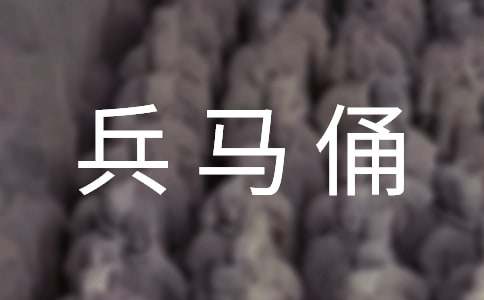- 相關推薦
陜西-秦始皇陵兵馬俑英文導游辭
Emperor Qin Shihuang's Mausoleum and the Terra-cotta Warriors and Horses Museum
Emperor Qin Shihuang (259-210B.C.) had Ying as his surname and Zheng as his given name. He name to the throne of the Qin at age 13, and took the helm of the state at age of 22. By 221 B.C., he had annexed the six rival principalities of Qi, Chu, Yan, Han, Zhao and Wei, and established the first feudal empire in China's history.
In the year 221 B.C., when he unified the whole country, Ying Zheng styled himself emperor. He named himself Shihuang Di, the first emperor in the hope that his later generations be the second, the third even the one hundredth and thousandth emperors in proper order to carry on the hereditary system. Since then, the supreme feudal rulers of China's dynasties had continued to call themselves Huang Di, the emperor.
After he had annexed the other six states, Emperor Qin Shihuang abolished the enfeoffment system and adopted the prefecture and county system. He standardized legal codes, written language, track, currencies, weights and measures. To protect against harassment by the Hun aristocrats. Emperor Qin Shihuang ordered the Great Wall be built. All these measures played an active role in eliminating the cause of the state of separation and division and strengthening the unification of the whole country as well as promotion the development of economy and culture. They had a great and deep influence upon China's 2,000 year old feudal society.
Emperor Qin Shihuang ordered the books of various schools burned except those of the Qin dynasty's history and culture, divination and medicines in an attempt to push his feudal autocracy in the ideological field. As a result, China's ancient classics had been devastated and destroy. Moreover, he once ordered 460 scholars be buried alive. Those events were later called in history “the burning of books and the burying of Confucian scholars.”
Emperor Qin Shihuang, for his own pleasure, conscribed several hundred thousand convicts and went in for large-scale construction and had over seven hundred palaces built in the Guanzhong Plain. These palaces stretched several hundred li and he sought pleasure from one palace to the other. Often nobody knew where he ranging treasures inside the tomb, were enclosed alive.
Emperor Qin Shihuang's Mausoleum has not yet been excavated. What looks like inside could only be known when it is opened. However, the three pits of the terra-cotta warrior excavated outside the east gate of the outer enclosure of the necropolis can make one imagine how magnificent and luxurious the structure of Emperor Qin Shihuang's Mausoleum was.
No.1 Pit was stumbled upon in March 1974 when villagers of Xiyang Village of Yanzhai township, Lintong County, sank a well 1.5km east of the mausoleum. In 1976, No.2 and 3 Pits were found 20m north of No.1 Pit respectively after the drilling survey. The terra-cotta warriors and horses are arrayed according to the Qin dynasty battle formation, symbolizing the troops keeping vigil beside the mausoleum. This discovery aroused much interest both at home and abroad. In 1975, a museum, housing the site of No.1 and covering an area of 16,300 square meters was built with the permission of the State Council. The museum was formally opened to public on Oct.1, the National Day, 1979.
本作文共3頁,當前在第1頁 1 2 3
【陜西-秦始皇陵兵馬俑英文導游辭】相關文章:
陜西秦始皇陵導游詞03-09
陜西秦始皇陵的導游詞02-06
關于陜西秦始皇陵導游詞07-05
關于陜西秦始皇陵的導游詞09-19
陜西兵馬俑的導游詞12-31
陜西兵馬俑導游詞12-30
陜西秦始皇陵導游詞9篇03-09
陜西兵馬俑的導游詞范文02-12
秦始皇陵兵馬俑導游詞12-31